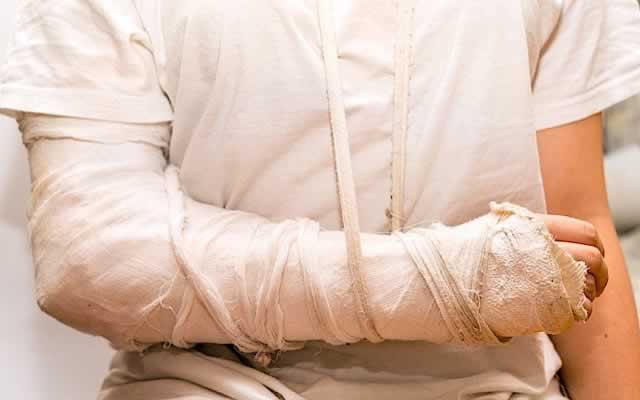A dislocated elbow is the result of the separation of the three bones, the humerus in the upper arm, and the radius and ulna in the forearm, that meet at the elbow joint. Tearing of the connective tissue may also be a result of an elbow dislocation.
An elbow can either be partially or fully dislocated. A third kind of dislocation, called Nursemaid’s elbow, is a kind of elbow dislocation that can occur in toddlers. In elbows, dislocations are one of the most serious injuries.
A dislocated elbow most commonly occurs when a person falls and catches themselves with his or her arms outstretched. This happens when falling from some height onto an unforgiving surface like pavement or tile flooring. Dislocations can also occur after car accidents, or during contact sports like football.
Symptoms of a dislocated elbow
Symptoms of a dislocated elbow include swelling, extreme pain in the elbow and visible distortion at the joint. A patient may also lose mobility in that area, and there may be an urge to cradle the arm to the body to protect it from further injury. Generally, the pain stays in the area of the elbow, however it can in some situations radiate down the arm to the fingertips. Sometimes taking acetaminophen or ibuprofen for pain can give some relief. Ice may help to reduce of the swelling.
Home treatment first aid of elbow dislocation
Symptoms of an elbow dislocation may be treated for temporary comfort, but in the vast majority of situations, patients will require medical professionals to perform a “reduction” correct the situation. In some cases the injury may require surgery for correction. In either case, treatment may be followed up with a physical therapy program.
Treatment process at trauma center
A doctor will x-ray the elbow checking for broken bones, damaged arteries and nerve trauma determining if surgery is needed. Reduction without surgery is called closed reduction, meaning surgery isn’t necessary. This is done after administering strong painkillers and muscle relaxers. It is generally painful to reduce an elbow manually, and requires at least two people to perform the maneuver using quick force to pop the elbow back in its place.
Surgical treatment for elbow dislocation
The surgical option is required when there has been damage to ligaments, or one of the three bones in the elbow is broken. Surgery is also required if there is damage to nerves or arteries. If there is extensive swelling, surgery may have to be delayed. The surgical procedure is determined by the type of damage to the joint area. Pins and wires maybe required internally. Externally, braces, slings or plaster casts are sometimes used for immobilization.
After being immobile for several weeks the elbow may require physical therapy to regain a full range of motion. This will also increase the joint’s strength, which will have diminished after days or weeks of disuse.
In many patients, motion is fully restored. In some patients, damage is too extensive even with therapy to regain full function. Treatment for this condition, like all medical treatments, is always evolving, and the prognosis is usually good one.
